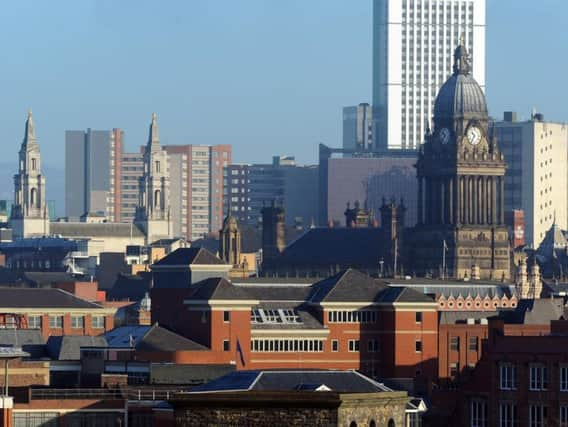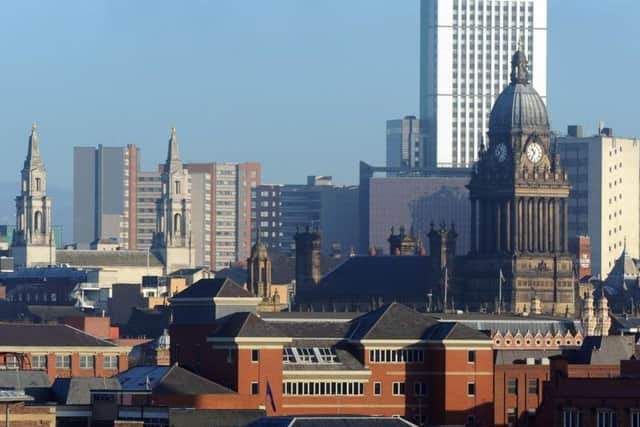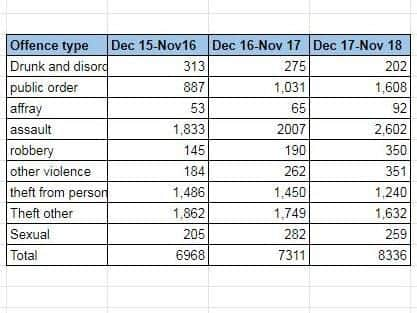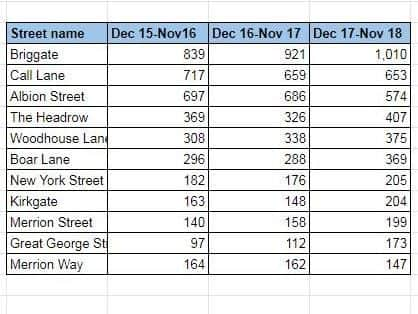City centre crime increases by a fifth in just two years


The figures from West Yorkshire Police had been published in a report reviewing the effectiveness of controls on premises serving alcohol in the city centre.
It shows that crimes such as assault, affray, robbery and sexual offences have dramatically increased up between 2016 and 2018, but theft and drink-related public order offences have been in decline.
Advertisement
Hide AdAdvertisement
Hide AdBriggate is listed as the city centre’s most crime-ridden street, with more than 1,000 criminal offences taking place there between December 2017 and November 2018.


During the period of December 2015-November 2016, the police recorded 6,968 crimes taking place in the city centre. However, this jumped to 8,336 for the period December 2017-November 2018, meaning an increase of almost 20 per cent.
An increase took place during that time in the number of public order offences from 887 in 2015/16 to 1,608 in 2017/18; as well as affray (53 to 92), assault (1,833 to 2602) and robbery (145 to 350).
The report added: “Briggate has remained the top street for offences throughout the previous three years and the level of offending is still increasing. Call Lane and Albion Street, although remaining at the top of the table have both seen a small continual decrease in offences.
Advertisement
Hide AdAdvertisement
Hide Ad“There has been a continual increase in offending on Woodhouse Lane, Merrion Street and Great George Street.”


The data did, however, show a decrease during that period in the number of crimes labelled “drunk and disorderly”, “theft from person” and “theft other”.
The findings were based on a report published by West Yorkshire Police last year into the effectiveness of the city centre’s cumulative impact policy (CIP) zones.
A CIP zone is a specified area in which the council makes it more difficult to obtain new alcohol licences, due to existing problems with drink-related antisocial behaviour. Leeds city centre currently has two concentrated CIP areas – known as red zones – around Woodhouse Lane and around Call Lane.
Advertisement
Hide AdAdvertisement
Hide AdTh assessment stated: “In the past, premises in those areas deploy street marshals at their own expense as it has been recognised that early intervention can prevent an escalation in the severity of incidents on the street.


“As police resources are reducing each year, priorities have been realigned. There has been a small reduction in the number of arrests for drunk and disorderly but an increase in assault. In discussion with West Yorkshire Police the licensing authority has been made aware that this could be the result of less arrests being made at an early level (i.e. arresting people for being drunk and disorderly), and so the low level offences are escalating to the more serious assault charge.”
It concluded that the CIP areas around Call Lane and Woodhouse Lane should continue as normal, while areas around Board Lane should be “closely monitored”.
“The increase in violent crime is concerning,” it added. “The council is already working with partners and businesses to establish if further work can be done to reduce these crime figures over the next 12 months.”
Advertisement
Hide AdAdvertisement
Hide AdCouncillors will be asked to consider the review’s findings into the effectiveness of its cumulative impact policies, and whether to agree with its recommendations.
Another report by council officers for the committee concluded: “The revised police evidence showed that no change is needed to the city centre cumulative impact area as the boundary of the red and green areas is still in the right place, even though the increase in violent crime is concerning.”
The reports will be discussed by the council’s licensing committee on Tuesday, July 2.